The Rende branch of the Institute on Atmospheric Pollution of the CNR (CNR-IIA) stands out for its strong multidisciplinary scientific research skills in the complex and wide field of atmospheric pollution. Our efforts are mainly focused on mercury (Hg) pollution and Persistent Organic Pollutants (POPs).
Our researchers and technologists are included in the most prestigious national, European and world networks and develop partnerships with companies and other public and private research organizations. The Rende Secondary Operative Unit also provides high-level consultancy services for the Public Administration and for European and International organizations.
We promote the values of environmental sustainability through scientific research as a driving force for growth for the territories. We support training and on-the-job training, with dissertations, doctoral scholarships and post-doc programs, such as the Marie Skłodowska-Curie GMOS-Train action.
Personale
Andreoli Virginia

Researcher
The scientific activity of Virginia Andreoli, biologist and clinical pathologist, carried out in the field of hematology, clinical biochemistry and molecular genetics, is divided into some main lines of research, listed chronologically and documented by printed works, published in international JCR journals.
Laboratory diagnosis of some forms of Thalassemia – Identification and molecular characterization of abnormal hemoglobins – Study of erythrocyte metabolism (1991/1996).
Study of Mitochondrial Encephalomyopathies, with particular reference to the molecular study of Mitochondrial Diseases (1996/2013).
Study of neurodegenerative diseases of the nervous system, with diagnostic and scientific study of genes related to Familial Alzheimer’s Disease, as well as candidate genes for the susceptibility of multifactorial neurological diseases such as sporadic Alzheimer’s disease and multiple sclerosis (1996/2013).
Study of biomarkers of exposure and susceptibility to mercury and environmental pollutants, to assess the impact on health and the highly variable individual responses to the toxic action of environmental pollutants (2013 / present).
Bencardino Mariantonia
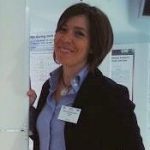
Researcher
Dr. Mariantonia Bencardino is a scientific researcher at the CNR-IIA. She carries out research on the fate and transport of atmospheric pollutants and is responsible for the management of the super site of Monte Curcio, which is part of the WMO Global Atmospheric Watch program.
She has experience in QA / QC of atmospheric monitoring data and using statistical and meteorological models to evaluate source-receptor profiles.a
Bevacqua Gianluca

Research Fellow
Expert in communication, strategic marketing, dissemination and outreach, with experience in the management of European and international projects.
Bruno Delia
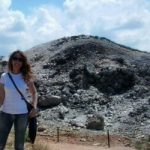
Researcher
Graduated in Geological Sciences at the University of Calabria in 2001, with a thesis in Geomorphology and recent tectonics by Capo Vaticano, and qualified as a Geologist in 2001.
She obtained a PhD in Earth Sciences in 2006 in Naples at the Federico II University, on the relationship between meteorism, evolution of the slopes and crystalline rocks of the Sila Massif. She worked at the CNR-Bari Water Research Institute from 2008 to 2018, in projects related to desertification, geothermal resources, coastal dynamics, environmental monitoring networks.
Since 2018, she has been a permanent researcher at the CNR-Institute for Atmospheric Pollution of Rende where she deals with emissions deriving from gold mining using artisanal methods, mercury pollution in the Mediterranean basin, geo and mining heritage.
She is editor of the following magazines: “Geologos”, “Frontiers” and “Environments”.
Carbone Francesco

Researcher
Dr. Francesco Carbone is a researcher at the Reaserch Institute on Atmospheric Pollution (CNR-IIA).
Orcid | Research Gate | People
Cinnirella Sergio
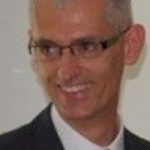
Researcher
Researcher at the CNR-IIA Rende branch. He has 25 years of experience in national and international projects (EUROCAT, MERCYMS, ELME), leading activities related to GIS and database development, statistical analysis of environmental data, remote sensing techniques and evaluation of environmental strategies for implementation of European policies.
He has been responsible in WP for EU-funded projects, which aimed to define a methodological approach for the implementation of the Mediterranean Fisheries Directives (KNOWSEAS) and to establish an interoperable system for a worldwide mercury monitoring network. (GMOS). He is in charge of the GEO-Lab aimed at developing methodologies and tools to connect science and technology through user-friendly products. GEO-Lab maintains the Cyber (e) -infrastructure of the institute.
He is the Italian delegate in the UNECE-CLRTAP-WGE. He was a member of the IV GEOSS evaluation group aimed at evaluating the implementation of the Work Plan. He is responsible for unit 3: emission inventories and Cyber (e) -infrastructure of the National Reference Center for Mercury. He is a peer reviewer for international scientific journals (e.g. Atmospheric Environment, Environmental Pollution, Environmental Monitoring & Assessment, Geoderma) and projects (FCT Portugal; FWF Austria; PRIN Italy).
He has published over 125 articles in journals, books, encyclopedia entries, technical reports for international agencies, international conference proceedings and technical reports.
De Simone Francesco

Researcher
I am a Physicist, expert in scientific programming on high performance computing systems. At the beginning of my scientific career I have been involved for several years in the development of Decision Support Systems and Optimization Models in an Operations Research group operating in the Finance sector.
At the IIA I obtained a PhD in Physics of Complex Systems, developing a Chemistry and Transport Model (CTM) for the study of the atmospheric cycle of mercury (Hg). I am currently working on the design and development of what are technically called CTM reduced forms that allow you to obtain the results of a complex and resource-intensive model, such as a CTM, with a small negligible quantifiable error, but in a fraction of the time and computational resources necessary for the complete model.
The use of these reduced forms has the great advantage of bridging the gap that exists between scientific community and policy makers in tackling complex problems such as the management of pollutant and / or greenhouse gas emissions into the atmosphere. In this regard, their implementation in web portals accessible from any device, including mobile, is an added value.
Giacomantonio Roberto

Technical Assistant
Roberto Giacomantonio collaborates in the administrative management of the Institute.
Hedgecock Ian

Researcher
Dr. Ian M. Hedgecock has been a researcher at the CNR-IIA Division of Rende since 2001. His research interests are based on the modeling air pollution and on the fate and impact of mercury in the atmosphere and environment.
He has experience in detailed modeling of atmospheric processes using 0-dimensional box models and regional modeling for high resolution simulations of atmospheric mercury chemistry and mercury deposition fluxes.
More recently he has started using climate models with atmospheric mercury chemistry to study long-term and long-range mercury transport and deposition patterns.
Mannarino Valentino
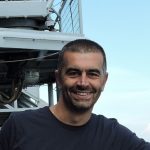
Technical Assistant
Valentino Mannarino has been working as Technical Assistant for Research Institution at the CNR-IIA Rende branch since April 2012, mainly dealing with the management coordination and ordinary and extraordinary maintenance of the high altitude atmospheric monitoring station of Monte Curcio in Camigliatello Silano – Spezzano della Sila (CS); the management of the procedures for the purchase of goods, services and works for the Rende branch, from market researches to identify economic operators, to the preparation of all the documentation necessary for the procedure, passing through the assessment of the adequacy of offers / estimates, the acquisition of documentation proving the possession of the requisites of economic operators, creation and issuing of orders on the MEPA (Electronic Market of the Public Administration).
Other activities carried out are: management of the pickup owned by the Institute, Mazda BT-50; management and distribution of Meal Vouchers relating to the staff assigned to the Institute’s Rende Secondary Office; in charge of First Aid operations and fire prevention service; inventory management of the Institute’s movable assets; collaboration in the management of staff attendance at the UOS-Rende Secondary Office.
Previously, from June 2003 to March 2012, he served as CTER at the ENEA Research Center in Trisaia, Rotondella (MT), in the field of research on “Energy from renewable sources – Biomass”, carrying out design activities using electronic CAD of mechanical components and machinery with particular reference to prototype plants for the production of energy and biofuels from biomass, on a laboratory, bench and industrial scale.
He also took care of the commissioning for experimental gasification tests on fixed bed and fluidized bed systems as well as maintenance activities on the components of the various gasification systems themselves, Steam Explosion and operating machines of the mechanical workshop of the center.
Martino Maria

Research Fellow
Maria Martino is a biologist which achieved a bachelor’s degree and a master’s degree in Biology at the Department of Biology, Ecology and Earth Sciences of the University of Calabria (UNICAL).
She obtained a PhD in Physical, Chemical and Materials Sciences and Technologies (University of Calabria in agreement with the CNR Institute of Atmospheric Pollution Research) working on conventional and innovative technological systems for measuring mercury (Hg) in ambient air within regional and global monitoring networks and on the analysis of mercury concentrations in aqueous samples such as wet deposition and seawater samples.
She is currently a postdoctoral researcher at the CNR Institute of Atmospheric Pollution working on monitoring and analytical determinations of persistent inorganic pollutants in various environmental matrices with particular reference to mercury.
Miraglia Stefano

Technical Assistant
VIII level technical operator, he has been working at CNR-IIA since 2011. Since 2014 he has been responsible for the protocol. He takes care of the registration of all incoming, outgoing and internal documentation relating to the secondary branch in Rende.
Since 2014 he has been in charge of controlling the first aid health facilities. He is responsible for periodically checking the health facilities, specifically: the order, expiration, completeness and integrity of each item. Since 2016 he has been responsible for the secretaryship.
He is responsible for interfacing with UNICAL regarding the requests for the management of the headquarters’ infrastructures.
Pirrone Nicola
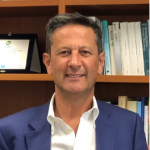
Research Director
Nicola Pirrone is Research Director of the National Research Council (CNR) of Italy and Adjunct Professor at the School of Public Health of the University of Michigan. Most recently he was Director of the CNR Institute on Atmospheric Pollution (2008-2018) and Visiting Scholar at the Harvard John A. Paulson School of Engineering and Applied Sciences (SEAS) (2018-2019).
He is an expert for major public and private, international and national organizations in the field of environmental research and policy development. He is Representative of the EU Presidency in the ad-hoc group for the Evaluation of the Effectiveness of the Minamata Convention and Italian Representative in the Group on Earth Observation (GEO) and Member of the EU HLWG and Executive Committee of GEO. Since 2007 he has been co-chair of the UNEP Fate & Transport Research Area, which provides scientific support to UNEP for the implementation of the Minamata Convention.
He was Deputy Head of the Italian Delegation to the Conference of the Parties (COP1 and COP2) of the Minamata Convention, and Head of the Italian Delegation for the Executive Board of the UNECE-LRTAP-EMEP. He is currently president of the GEO Flagship on Mercury (GOS4M).
He has published over 300 peer-reviewed articles in literature, books and international conference proceedings and has coordinated several national and international projects and programs (e.g., MAMCS, MERCYMS, GMOS, ERA-PLANET) aimed at improving our understanding of the biogeochemical cycle of persistent pollutants and to improve the use of Earth Observations in various domains of Earth system science.
He received the Kathryn R. Mahaffey Lifetime Achievement Award for “his outstanding contribution to mercury research and policy”, the UNEP award for “his commitment and outstanding contribution to the UN Environment Global Mercury Partnership” and the international award of Green Cross Italy for its contribution to environmental research and policy development.
Sprovieri Francesca

Branch Manager
She is coordinator and WP-leader, as well as actively involved in various projects funded by the European Union (DG-Research; DG-Environment) in the various Framework programs (FP4, FP5, FP6, FP7, H2020 etc.), National (i.e., CNR, PNRA) and agreements of National (Ministry of the Environment – MATTM) and International Cooperations.
The research activity, in which she plays, in particular, the role of coordinator of scientific activity, is carried out through the study of the transport processes and chemical-physical transformations of the major atmospheric pollutants on different spatial and temporal scales, with particular reference to the dynamics of mercury in the Arctic and Antarctic polar troposphere and in the Marine Boundary Layer (MBL) of the Mediterranean area by coordinating within the various research projects, intensive measurement campaigns in urban, rural and remote areas, including oceanographic campaigns in the Mediterranean Sea .
The research activity also included the development of standard methods for mercury and its compounds within the activities of the Working Group on Mercury of CEN / TC 264 and, currently, the development and implementation of new sampling techniques. and analytical techniques for the determination of mercury levels and its chemical speciation in the atmosphere within EMPIR co-financed projects (European Metrology Program for Innovation and Research) in H2020.
Sprovieri Teresa

Researcher
Ph.D in Clinical Neuroscience, Specialization in Clinical Pathology, Master’s Degree in Biology. She is a researcher at the National Research Council-Institute of Atmospheric Pollution (CNR-IIA) and professor at the University of Calabria.
She has more than 20 years of experience in molecular genetics, genomics, microbiological skills and, currently, in environmental biomonitoring. Since 2019 she has been carrying out her research activity in the context of the National and European projects in progress at the Rende branch in the experimental sector, through the study of the main atmospheric pollutants in the various environmental and biological matrices, with particular reference to the chemical speciation of mercury, also through the implementation of new sampling techniques and analytical techniques for the evaluation of the impact of this pollutant on human health.
She has published more than 100 scientific papers in international journals, communications at national and international conferences.
Tassone Antonella

Research Fellow
Antonella Tassone graduated with honors in Chemistry in 2013 at the University of Calabria, with a thesis in the field of analytical chemistry. In 2015 she earned with honors a Master’s degree in Chemistry, with a specialization in Physical and Inorganic Chemistry.
She has completed a PhD. at the CNR-Institute of Atmospheric Pollution Research – division of Rende -carrying out studies on the monitoring in different environmental compartments of speciated mercury and organic pollutants linked to particulate matter with traditional and innovative analytical methods.
She is currently a postdoctoral researcher at the Rende Institute of Atmospheric Pollution and is currently working on projects focused on the quantification of mercury species in the atmosphere, water and wet deposition, as well as on the development of SI traceable protocols for calibration and certification of elemental and oxidized mercury gas generators.
She is also responsible for monitoring the levels of atmospheric particulate matter at the Monte Curcio high-altitude observatory.
Tripano Roberto

Technical Assistant
Roberto Tripano supports the CNR-IIA in hes role as technical assistant.
Ungaro Carmine
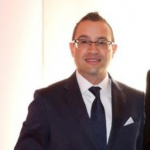
Researcher
Ph.D in Clinical Neuroscience, Post-graduate specialization with honors in Clinical Pathology, 2nd level University Master with honors in Nutraceutical Integration: from well-being to care, 2nd level University Master in Food Hygiene and Food Law, Specialization in Multidisciplinary Diagnostics and Therapy of Neuromuscular Diseases, Five-year degree cum laude in Biological Sciences.
Adjunct professor at the University “Magna Graecia” of Catanzaro and at the University of Salento, he is a researcher at the National Research Council – Institute on Atmospheric Pollution (CNR- IIA). He has twenty years of experience in the field of molecular genetics and genomics, also acquiring skills in the field of biochemistry and, currently, in the field of environmental biomonitoring.
Since 2019 he has been carrying out his research activity in the context of national and European projects in progress at the secondary office of the Institute in Rende (CS), mainly dealing with the analysis of the main atmospheric pollutants in the various environmental and biological matrices, with particular reference to the chemical speciation of mercury, also through the implementation of new sampling methods and analytical investigations aimed at assessing the impact of this pollutant on human health.
He has published more than 40 scientific papers in peer-reviewed international journals and over 160 proceedings of national and international conferences.
